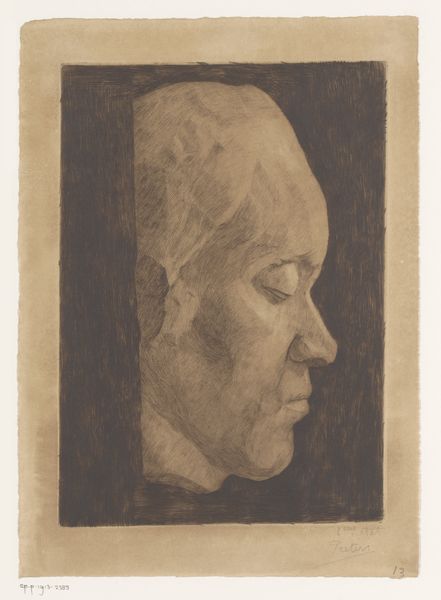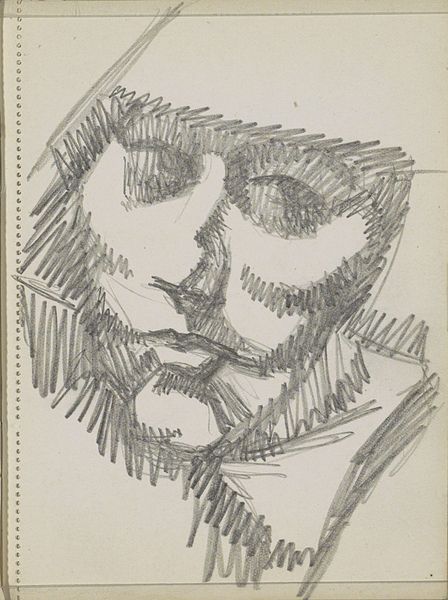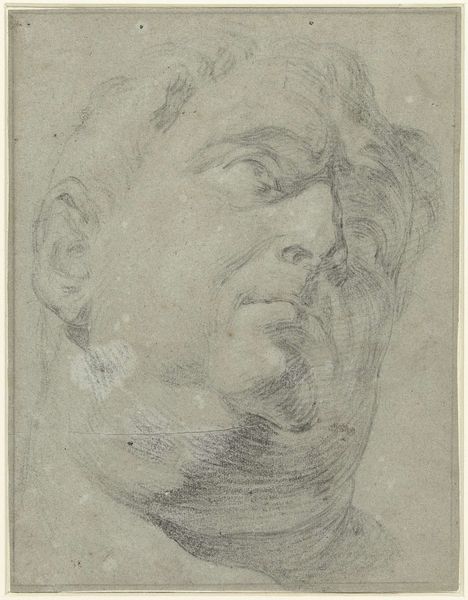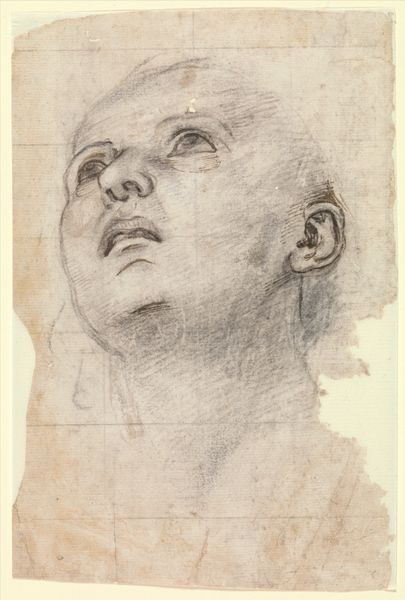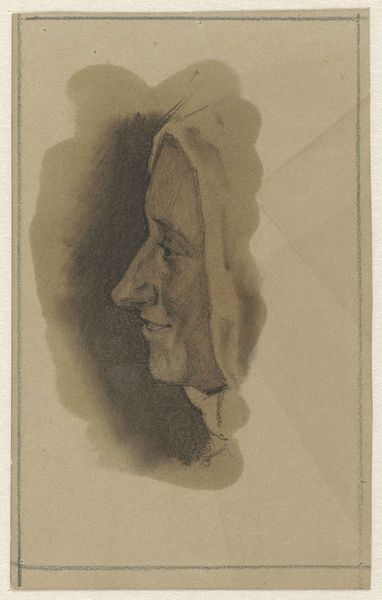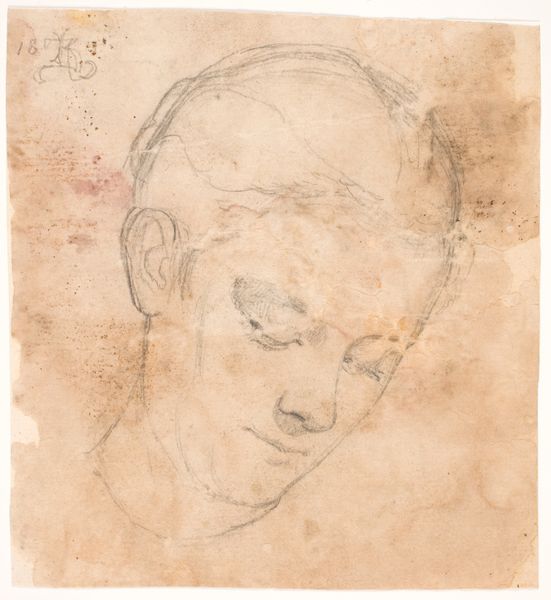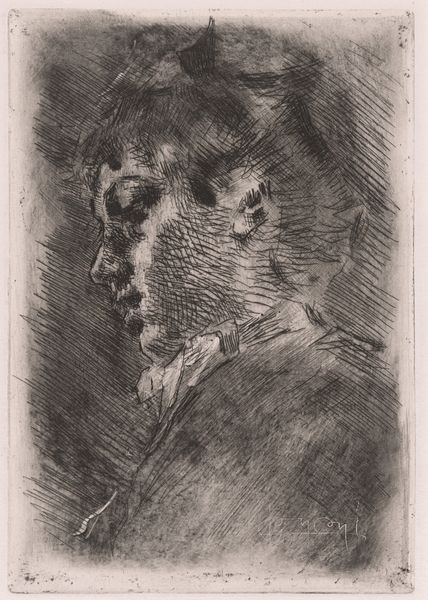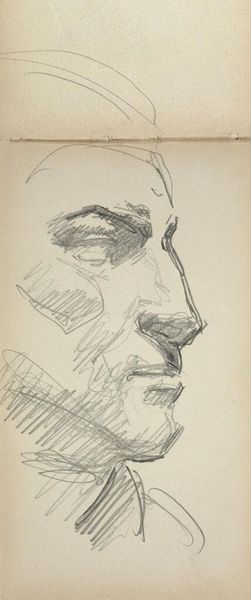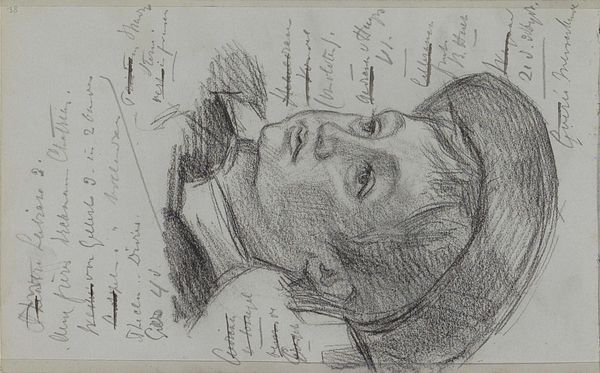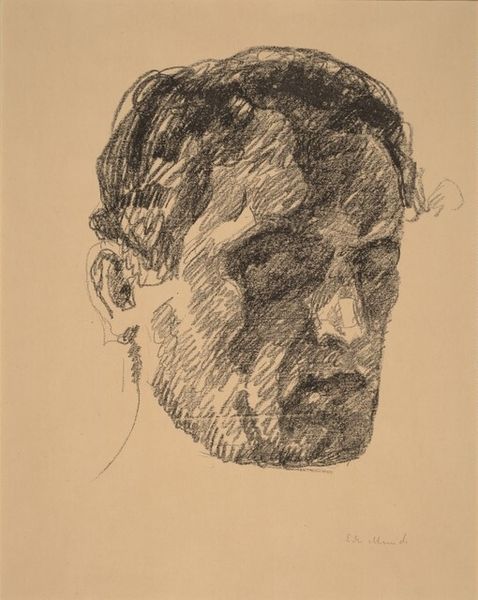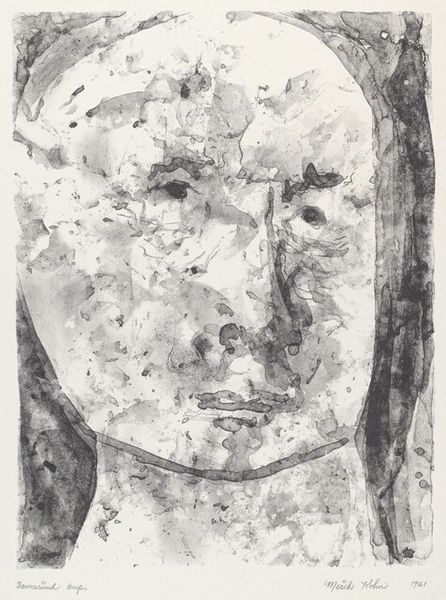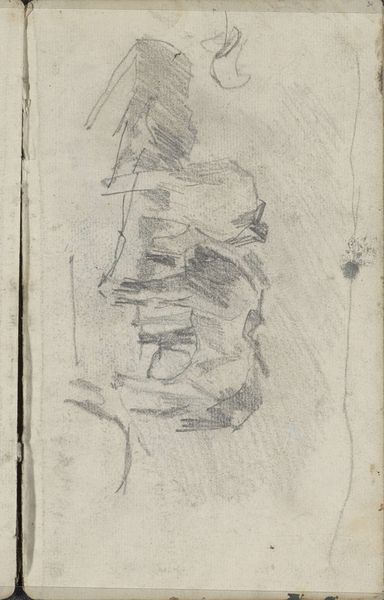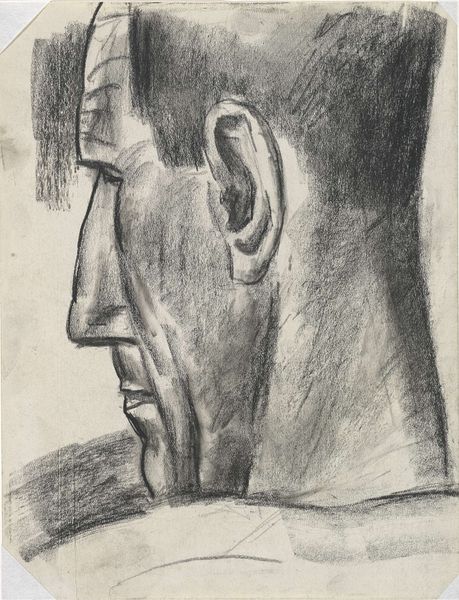
drawing, pencil
#
portrait
#
pencil drawn
#
drawing
#
pencil drawing
#
romanticism
#
pencil
#
portrait drawing
Dimensions: 150 mm (height) x 81 mm (width) (bladmaal)
Editor: This is Johan Thomas Lundbye's "Study after Napoleon's Death Mask" from 1839, a pencil drawing. The effect of the tightly rendered lines gives an impression of profound stillness, even sleep. What compositional elements strike you as most significant? Curator: Note how Lundbye manipulates line and tone to model the form. The hatching technique is remarkably consistent, building volume through density of line rather than stark tonal contrast. Observe how this technique impacts our perception of texture: skin seems smooth, almost porcelain. What does the repetitive nature of this hatching evoke for you? Editor: There’s a methodical, almost clinical feel, especially when paired with the subject matter: a death mask. Curator: Precisely. Consider also the shallow depth of field. The focus remains intently on the facial features, reducing everything else to supporting background, ultimately compressing the visual field and intensifying the viewer’s experience. Editor: So, the restrained palette and tight focus serve to amplify the solemnity of the image? Curator: Indeed. By restricting the colour and narrowing the focal range, the drawing becomes an exercise in essential forms. The artist seems to remove artifice, pushing the boundary between study and finished work. Editor: I see that now. It’s less about Napoleon and more about form and line. Curator: Precisely. Editor: This has definitely given me a fresh perspective on looking at Lundbye’s formal choices.
Comments
No comments
Be the first to comment and join the conversation on the ultimate creative platform.
